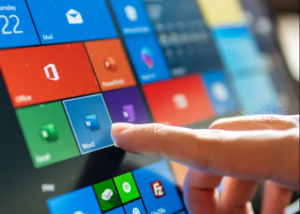Do you want to disable the touch screen in Windows 10? If yes, then you are in the right place. Many computers come with a touch screen display with Windows 10. As it provides the best of both worlds whenever you use both the touch screen like in a tablet and a keyboard or mouse on a laptop.
However, there are some benefits to a touch-enabled display. Also, a time when you want to just shut down the touch screen in Windows 10. Some cases include the following:
- You have damaged the LCD of the laptop and the touch screen is also interferes with your work.
- You want to increase the battery life of your PC.
- It’s a good idea to turn off the touch screen in Windows 10 while you are presenting something and might end up messing up your presentation after touching on the incorrect slide.
- The PC is having a phantom touch or ghost touch issues.
There are two ways to turn off the touch screen in Windows 10. Also, we discuss both of them here:
Contents [hide]
Disable Touch Screen In Windows 10 Via Device Manager

To disable the touch screen immediately but temporarily, you can turn off the touch screen device from the Device Manager. Here are the instructions involved:
Step 1:
Head over to the Device Manager (Windows key + X + M)
Step 2:
Then expand Human Interface Devices
Step 3:
Right-tap HID-compliant touch screen
Step 4:
Choose Disable
If you want to again turn on the touch screen:
Step 1:
Head over to the Device Manager (Windows key + X + M)
Step 2:
Then expand Human Interface Devices
Step 3:
Right-tap HID-compliant touch screen
Step 4:
Then choose Enable.
Many people complain that this method only works temporarily and the touch screen is enabled again when they restart the system. If you want to permanently turn off the touch screen, you just follow the other method.
Turn Off Touch Screen Permanently Via Windows Registry

If you want to permanently turn off touch screen in Windows 10, you should then follow the instructions below:
Step 1:
Open Windows Registry Editor (Run –> regedit)
Step 2:
Head over to the following registry key:
Computer\HKEY_CURRENT_USER\Software\Microsoft\Wisp\Touch
Step 3:
From the right-hand pane, just a new DWORD 32-bit entry uisng the name TouchGate.
Step 4:
Ensure the entry value of this is 0.
Step 5:
Restart your PC.
The touch screen will not work after restart. If you want to turn off the touch screen again, modify the TouchGate value from 0 to 1, or just remove the TouchGate entry.
After using Microsoft Surface laptop and your touch screen stops working, you can then follow this article from Microsoft to fix your touch screen problems.
Conclusion:
Does this guide help you in turning off the touch screen of your device? If yes then which technique did you use? What are your overall experiences with Windows 10 tablet mode or touch screen? Let us know your thoughts in the comment section below!
Also Read:






